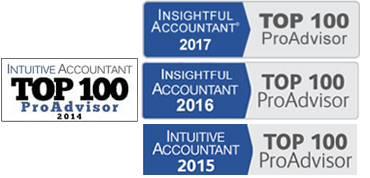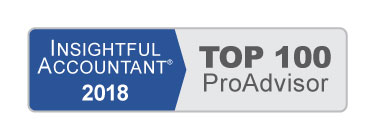Fixed assets are special kind of assets in your business. They include land, buildings, equipment, furniture, and vehicles that your company owns. While we frequently look at expenses to cut costs, fixed asset management is another place we can look to find ways to better utilize our resources and, in some cases, improve our profits.
Fixed asset management is a discipline that requires keeping good records of the assets a company owns. In the case of furniture and equipment, many businesses place an asset tag on the item and assign it a number that goes in a spreadsheet where data is kept about the item. There are also software apps more sophisticated than spreadsheets that track all of the fixed assets for a company, including original cost, depreciation method and history, and tax treatment.
You never know how many of an item you might have until you record and count them. How many computers (and computer parts) do you have lying around your office? Extra desks and chairs? Maybe you even have extra office space or extra land.
Part of being a great entrepreneur is fully utilizing all the resources you have at your disposal. Where can you put to better use the extra assets you have? Could you sell the surplus items? Or donate them for a write-off? Do you have extra room to rent out to a tenant, earning rent?
Sometimes we’re so focused on operating the core of our business that we don’t see what else is a money maker right in front of us. In addition to focusing on income and expenses from operations, consider the resources you have in your fixed assets.
At the very least, consider developing a spreadsheet that tracks the major items your business owns. Or reach out to us, and we’ll help you develop a fixed assets schedule and tracking process for your business.
And if you do sell some of your fixed assets, be sure to reach out to us so we can help you record the transactions properly.
Whether you call it bacon, Benjamins, or big bucks, cash – having enough of it – is key to running your business. Here are five tips related to managing and getting the most out of your business cash.
1- All banks are not the same.
Choose your bank wisely, and don’t be afraid to switch if you need to. Banks know they have a “high switching cost,” which means it’s one big time-consuming hassle for customers to change banks.
A couple of things that are important when choosing banks (some of which we never knew to ask five years ago) include:
- Is your accountant able to connect your accounting system with free bank feeds, saving you hours and hours of accounting work?
- How automated is your bank? The more automated, the fewer errors, and the more likely the bank is to have competitive services, features and prices.
- What is their policy on holding large deposits?
- Do they offer ACH services?
- Does your payroll withdrawal need to be approved each pay period?
Accountants have experience with banks, so if you are in the market for a new one, feel free to reach out and ask us our opinion on the easiest bank to work with.
2- Keep the number of cash accounts to a functional minimum.
Certainly, you’ll need at least a business checking account, often a business savings account, a business PayPal account, and perhaps a petty cash fund. You may also want a separate account for payroll; a lot of companies do. But if you need more accounts, there should be a functional business reason to support them. That’s already a lot of accounts to reconcile and keep track of each month.
The same is true of credit card accounts. It’s the keep-it-simple approach.
3- Reconcile all of your cash accounts every month.
Keeping all of your cash accounts reconciled each month is a good idea. If a bank error, accounting mistake, or even fraud occurs, you can catch it and get it resolved more quickly than if you delay.
You’ll also have more accurate information about your balances and can move and manage your money better.
As you learn your balances each month, you can also move money around. Unless you spend a lot out of PayPal, plan to move that money to pay off debt or into your checking account on a regular basis.
4- Maintain a cushion in your checking account.
If your checking account hovers close to zero more often than not, you may be wasting precious time watching your bank balance instead of spending time to manage your business. If you make a small error, you may get hit with costly overdraft fees, making your cash situation even worse.
Instead, consider depositing a fixed amount, like a cushion, that you never spend. You won’t get overdraft fees, and you won’t have to watch your balance so closely. You may give up some interest income, but the time freed up and the reduced worry will be worth a few extra pennies.
5- Watch your liquidity.
Cash is to business as water is to people; we can’t live without it. Make sure you have enough to cover future obligations, and when possible, build up several months of reserve for emergencies. Anything that you can liquidate quickly, such as accounts receivable, can count toward this fund too.
Try these five cash flow tips to keep bringing home the bacon in your business.
Social security is one of those topics that seems to be minimized by statements like, “You can’t count on it,” and “By the time you reach retirement age, it won’t matter.” Those statements are not only incorrect; they contribute toward a lack of education on what’s possible.
Social security is still a large part of how most seniors will be able to fund their final 20 to 30 years of life. The options we take toward claiming the benefits that are rightly ours are often permanent and can affect our lives and our finances significantly, often by tens of thousands of dollars.
No matter your age today, here are three things you’ll want to dive deeper into when the time is right for you.
Claim date
For retirement purposes, most people will claim their social security payouts any time from age 62 to age 70. It’s your choice to decide when you make the claim and start your benefits. But, and it’s a very big but, the amount you get each month will vary depending on your claim date. Generally, the later you wait, the higher your payout will be.
The federal retirement age for social security purposes depends on when you were born and creeps up a little each year. If you were born in 1954, your retirement age is 66 years old. If you file your social security claim on your retirement age, you’ll get 100 percent of your benefit. If you claim at 70, you’ll get 132 percent of your benefit, which can make a huge difference in payout over your lifetime: tens of thousands of dollars of difference. If you claim early at age 62, you’ll get far less.
Taxability
Your social security income may be taxable if you earn income in the same years you are collecting social security and if you surpass an earnings threshold. This takes many seniors by surprise. There are ways to plan for this, and they are so specific to each family circumstance and often so complicated that software has been developed to calculate all of the situations.
Eligibility
The amount of your social security payment is affected by dozens of factors, including family members’ ages, how much they paid into social security, pensions, previous marriages, and disabilities, to name a few. If any of your family members are disabled, there are payments for that in some cases.
If you are divorced and were married for more than 10 years, you are eligible for spousal benefits. And if you are married, you are also eligible for spousal benefits. If your spouse has passed away, you are eligible for survival benefits, which could increase an existing payment if your spouse earned more than you did.
Social security is clearly a topic where you don’t know what you don’t know. It’s so complex at this point that most people should work with an advisor who has software that can show multiple claiming options that optimize their lifetime payout or meet their financial retirement goals. If we can help, please reach out.

NEW BUSINESS DIRECTION’S RHONDA ROSAND, CPA RECEIVES 2018 TOP 100 PROADVISORS AWARD

NEW BUSINESS DIRECTIONS is pleased to announce that Rhonda Rosand, CPA has been named a 2018 Top ProAdvisor by Insightful Accountant, an independent news and information source written specifically for the small business advisor who needs to stay current on the latest news and offerings in accounting technology, including updates from Intuit, Xero, Sage and the hundreds of add-on products serving small businesses. Rhonda was selected as part of the Top 100 out of the growing list of more than 100,000 ProAdvisors.
This list recognizes the leading consultants who have embraced the ProAdvisor program and have leveraged it in order to better serve their clients and grow their own business. “We’d like to congratulate everyone who made this year’s list,” said Insightful AccountantSenior Technical Editor, William “Murph” Murphy. “We had several new people join the ranks this year.”
“I am honored to have received the Top 100 ProAdvisor designation for the 5thconsecutive year. We are inspired by helping small businesses, and we’re committed to their success. We find our work challenging and invigorating, and it shows in our results.” Says Rhonda Rosand, CPA
New Business Directions, LLC specializes in QuickBooks® set up, clean up, consulting and training services, coaching small business owners and providing innovative business solutions.
“This is the fifth year of our ProAdvisor awards,” said Insightful AccountantPublisher and Managing Partner, Gary DeHart. “Each year the competition continues to grow and we appreciate the hard work and efforts of all of our winners.”


Learn How To Add & Edit Multiple List Entries in QuickBooks with Rhonda Rosand CPA and Advanced Certified QuickBooks ProAdvisor!
 New Business Direction LLC
New Business Direction LLC
